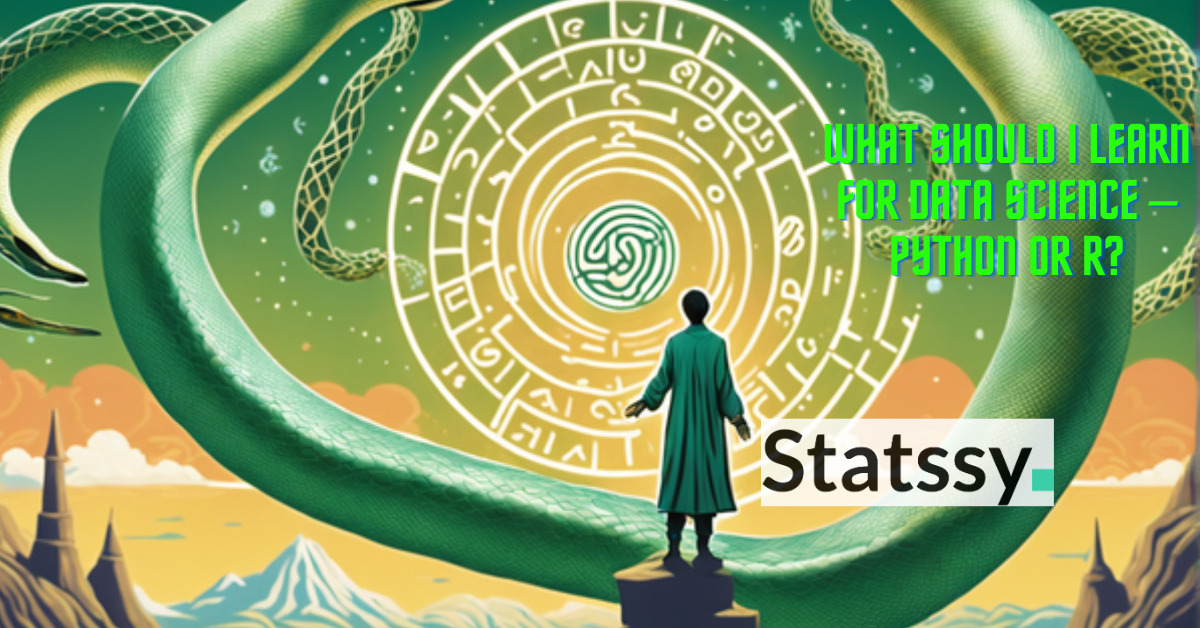What should I learn for data science – Python or R?

Confused?? 🙂
Don’t worry, I can understand that you heard a lot from multiple people, especially on LinkedIn or from your colleagues about which language to choose if you want to enter data science. R and Python are both popular programming languages for data analysis and scientific computing. But which one would be good for you is your biggest question.
What I suggest is look inside yourself rather than listening to someone else. Have you ever done any data science project? Have you ever encountered any data analysis team before?
If the answer is no, then imagine your mind as a blank slate and whatever you write on it will become your default setting. But can you change the default settings later? Obviously YES!!
Remember the time when you were in school learning alphabets. Have you ever discussed with someone what is the best way to learn them? No, because your mind was blank and the way your teacher taught you become the best way in which you learnt alphabets.
Consider data science being the same and Python & R being the two methods for learning data science. Both are good in their way and both are bad in their own way. Let me give you a comparison on five aspects.
- Purpose: R was developed specifically for statistical computing and data analysis, whereas Python is a general-purpose programming language that has been adopted by the data science community.
- Community: R has a strong and active community of statisticians and data scientists, while Python has a wider user base that includes software engineers, web developers, and scientists from various fields.
- Syntax and Ease of Use: Python is known for its simple, straightforward, and easy-to-learn syntax. R, on the other hand, has a syntax that is more specialized for data analysis and can be less intuitive for beginners.
- Packages and Libraries: R has many specialized packages for statistical analysis and data visualization, including the popular ggplot2 library. Python has a broader range of libraries, including NumPy, pandas, and scikit-learn, which are popular for data analysis, machine learning, and scientific computing.
- Performance: R is known for its slow performance compared to Python for large-scale data processing tasks. Python has faster runtime performance and is better suited for working with large data sets.
So what I mean to say is, both R and Python have their strengths and weaknesses, and the choice of which one is “better” depends on the specific use case and the individual’s preferences and expertise. If you are interested in statistical analysis and data visualization, R might be a better choice. If you are more interested in machine learning and data processing, Python might be a better choice. Ultimately, both languages are powerful tools for data analysis and scientific computing, and learning both can be beneficial.
Now I know your next question will be one of the two.
1. Which one should I choose to become a data analyst?
If you have to choose only one language to learn for data analysis, it would be better to choose Python.
Python is a general-purpose language with a strong emphasis on readability and usability, making it easier for beginners to pick up. It also has a vast library of tools and packages for data analysis, machine learning, and data visualization, such as NumPy, pandas, and Matplotlib. Python is also widely used in industry, so having Python skills is highly desirable for many data analyst roles.
However, R is a language specifically designed for statistical computing and data analysis, and it has a large number of specialized packages for data visualization, such as ggplot2. So, if you have a strong background in statistics and want to specialize in data analysis, then R would be the better choice.
2. Which one should I choose to become a data scientist?
Data Scientists typically use both Python and R for their work, as both languages have strong capabilities for data analysis and machine learning. However, if you have to choose only one language to learn as a data scientist, it is recommended to choose Python.
Python is a general-purpose language that has a strong emphasis on readability and usability. It has a large number of libraries and packages for data analysis, machine learning, and data visualization, such as NumPy, pandas, scikit-learn, TensorFlow, and Keras. Python is also widely used in the industry, making it a versatile language to have in your toolkit.
R is a language specifically designed for statistical computing and data analysis, and it has a large number of specialized packages for data visualization, such as ggplot2. However, as a data scientist, you will also need to work with big data, web scraping, and other technical skills that Python is better suited for.

